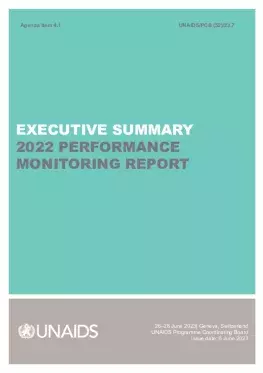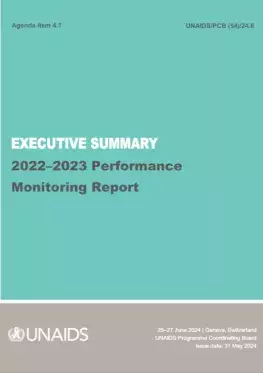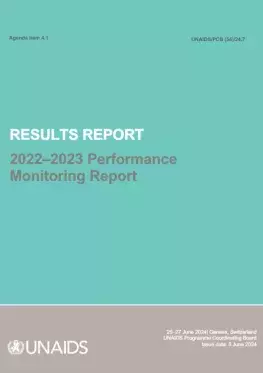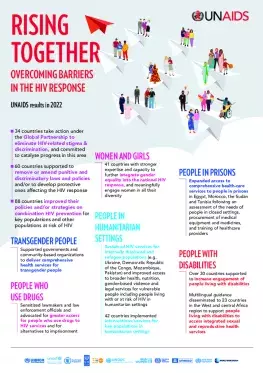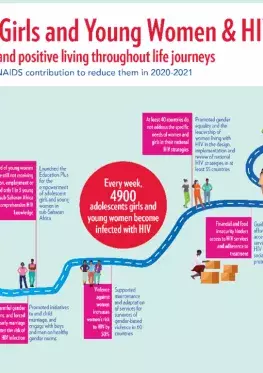Thanks to the Joint Programme’s global leadership in promoting gender equality as a cornerstone of the HIV response such as through securing political commitment and new tools, significant progress was made towards gender equality in 2022–2023. The Joint Programme strengthened the gender expertise and capacities of 50 countries to integrate gender equality in their national responses and to meaningfully engage women in all their diversity together with men. Gender assessments in 20 countries gathered evidence on the impact of gender norms in the context of HIV, catalysing new commitments and national strategies in several countries. The Joint Programme worked with governments in 35 countries on planning, budgeting and monitoring related to the gendered aspects of HIV responses
Policy and advocacy support by the Joint Programme helped mobilize partnerships in 30 countries to implement gender-responsive HIV prevention, treatment, care and support services that are free of gender-based discrimination and violence. UN Women scaled-up evidence-based interventions to transform harmful gender norms across 21 countries to prevent violence against women and HIV infections, including as part of implementation of the EU/UN “Spotlight Initiative”. Support from the World Bank’s International Development Association strengthened national policy frameworks in 15 countries to end gender-based violence, prevent HIV and expand access to services. The Joint Programme supported the design and delivery of gender-transformative HIV programmes, including to expand sexual and reproductive health and address gender-based violence through capacity building, the promotion of healthy gender norms, and legal and policy changes.
The Joint Programme supported women’s leadership and full engagement in the HIV response at all levels. Examples included women living with HIV advising on the integration of gender quality and human rights in the new WHO Global Health Sector Strategies on HIV, viral hepatitis and sexually transmitted diseases (2022–2030); UN Women’s across-country collective help address the high rates of HIV in sub-Saharan Africa and build capacities of women living with HIV in 20 countries. The Joint Programme also engaged men and boys as gender equality advocates and supported efforts to reform and implement laws for a more enabling environment of the HIV response.
At the global level, the 66th session of the Commission on the Status of Women (CSW) in 2022 resulted in the unanimous re-affirmation of the 2016 CSW 60/2 Resolution on Women, the Girl Child and HIV and AIDS by Member States. In the Southern African Development Community (SADC), a regional framework and programme of action tracks efforts to address root causes, such as gender inequality, that increase risks of adolescent girls and young women to HIV.


